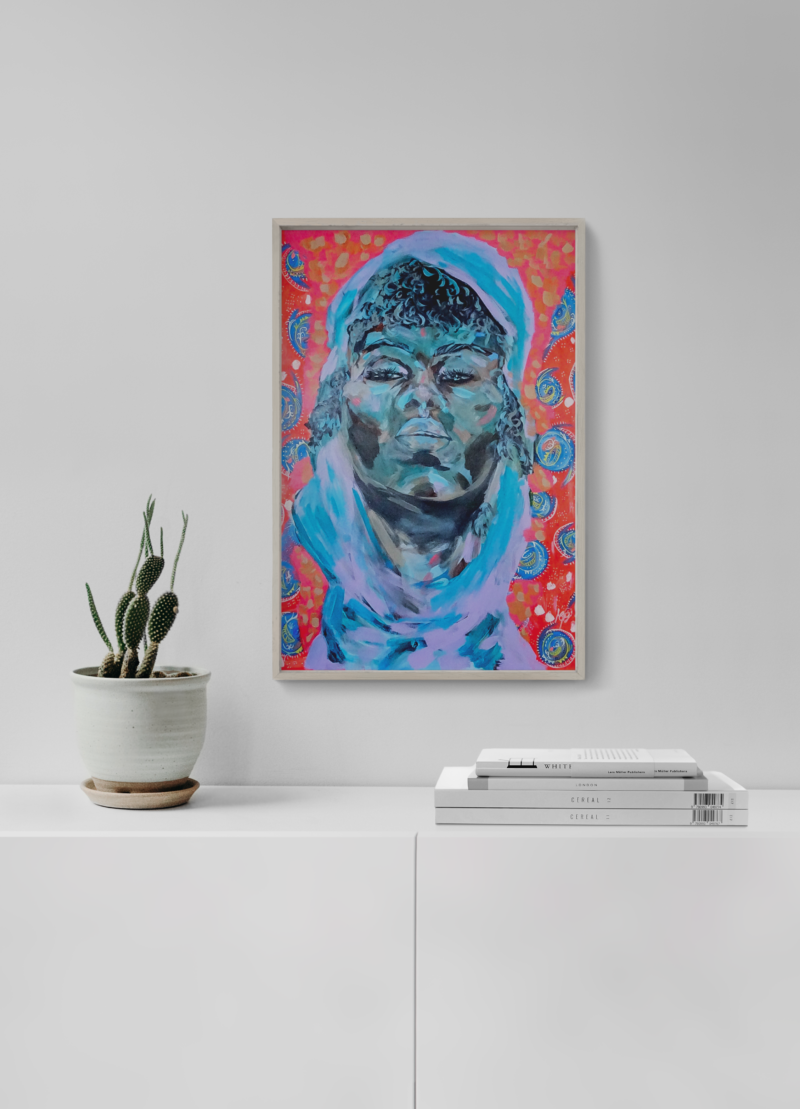
Acrylic vs. Oil Paintings: Crucial Differences, Advantages, and Solutions
Introduction
Art is a universal form of expression that transcends boundaries, and at the heart of this creativity lies the choice of medium. For centuries, artists have experimented with various techniques and materials to bring their visions to life. Two of the most popular mediums in contemporary art are acrylic and oil paintings on canvas. Both mediums have unique characteristics that influence the way an artwork is created, displayed, and preserved.
In this blog post, we will explore the crucial differences between acrylic and oil paintings, how they affect the execution and implementation of artworks, and how these mediums do not necessarily influence the price of an artwork. We’ll also delve into the advantages and disadvantages of both mediums and discuss solutions for overcoming their drawbacks. By the end of this guide, you’ll have a thorough understanding of these two painting techniques and how they shape modern and fine art.
1. What Are Acrylic Paintings?
The Origins and Popularity of Acrylic Paint
Acrylic paint was developed in the 20th century as a fast-drying alternative to oil paints. Its composition consists of pigment suspended in an acrylic polymer emulsion, which dries quickly and becomes water-resistant once dry. Acrylic paints became widely popular in modern art due to their versatility, ease of use, and vibrant colors.
Advantages of Acrylic Paintings:
- Fast Drying Time: Acrylics dry quickly, allowing artists to layer and finish their works faster than with oils.
- Versatility: Acrylics can be applied to a variety of surfaces including canvas, paper, wood, and even fabric.
- Water-Soluble: Before drying, acrylics can be thinned with water, eliminating the need for harsh chemicals.
- Durability: Once dry, acrylics become water-resistant, providing durability to the artwork.
Disadvantages of Acrylic Paintings:
- Lack of Blending Time: Because acrylics dry so quickly, artists have less time to blend colors on the canvas, making subtle transitions more difficult.
- Color Shift After Drying: Acrylic paints tend to darken slightly as they dry, which can make color matching a challenge.
FAQs:
- Why are acrylics popular in contemporary art?
Acrylics offer fast drying times, versatility, and vibrant colors, making them ideal for modern artists who work quickly and want bold visual effects. - How do acrylics dry compared to oils?
Acrylics dry much faster than oils, often within minutes to hours, whereas oil paints can take days or weeks to dry completely.
2. What Are Oil Paintings?
A Timeless Medium: Oil Paint on Canvas
Oil paint is one of the oldest and most celebrated mediums in fine art. Used by Renaissance masters like Leonardo da Vinci and contemporary artists alike, oil paint consists of pigments mixed with drying oils, typically linseed oil. This medium is prized for its rich texture, depth of color, and long drying time, allowing artists to achieve intricate details and complex color blends.
Advantages of Oil Paintings:
- Extended Working Time: The slow drying process allows for meticulous blending, glazing, and reworking of colors over an extended period.
- Rich, Luminous Colors: Oil paints produce deeper, more vivid colors that maintain their vibrancy over time.
- Flexible Techniques: Artists can apply oils in a variety of ways, from smooth, thin layers to thick impasto textures.
Disadvantages of Oil Paintings:
- Slow Drying Time: While the extended working time is an advantage, it also means oil paintings can take days, weeks, or even months to fully dry.
- Use of Solvents: Oil paints typically require the use of solvents, such as turpentine, which can be harmful if inhaled and require careful handling.
- Yellowing Over Time: Without proper care, oil paintings can yellow as the oils oxidize.
FAQs:
- Why do oil paintings take longer to dry than acrylics?
Oil paints dry through a process of oxidation rather than evaporation, which is much slower, allowing for extended blending time but longer drying periods. - Are oil paintings more durable than acrylics?
Both mediums can be long-lasting, but oil paintings are often seen as more durable due to their thick, rich texture, though they do require more maintenance over time.
3. Comparing the Implementation and Execution of Acrylic vs. Oil Paintings
Execution of Acrylic Paintings
When working with acrylics, artists must plan their compositions carefully, as the fast-drying nature of the medium leaves little room for reworking or blending once the paint is on the canvas. Acrylic artists often use mediums like retarders to slow down drying times, which allows for greater flexibility.
Acrylics are perfect for creating clean, sharp lines, layering bold colors quickly, and experimenting with mixed media. Due to their water-based nature, acrylic paints can easily be cleaned with water, and they don’t require as many specialized tools or solvents as oils.
Execution of Oil Paintings
With oils, the process is more fluid and methodical. Artists can work on their canvas over long periods, revisiting sections as the paint gradually dries. The ability to mix and blend colors on the canvas for extended periods is a major draw for artists who prefer to work in layers or glazes.
Oil paints require additional tools like palette knives, brushes, and solvents to achieve the desired texture and finish. Oils also provide more freedom for creating realistic effects such as soft gradients, light reflections, and transparent glazes.
FAQs:
- How do artists manage the quick drying times of acrylics?
Artists can use slow-drying mediums or retarders to extend the drying time of acrylics for more flexibility during painting. - Is it easier to correct mistakes in acrylic or oil painting?
Oil painting offers more time to rework and blend, whereas acrylics dry quickly, making it harder to fix mistakes after the paint has dried.
4. Pricing: Does the Medium Affect the Value of the Artwork?
The Myth of Medium and Pricing
One common misconception is that the medium used in a painting influences its price. However, the value of an artwork is generally determined by the artist’s reputation, the artwork’s size, complexity, and subject matter, not necessarily whether it was created with oil or acrylic paint.
Art collectors are more interested in the meaning, technical execution, and historical significance of a piece rather than the type of paint used. For example, a contemporary oil painting on canvas by a renowned artist could be priced similarly to an acrylic piece of the same size and complexity.
Factors That Influence Art Prices:
- Artist Reputation: The most significant factor in pricing is the fame and recognition of the artist.
- Size and Complexity: Larger, more intricate works often command higher prices.
- Rarity and Limited Editions: Collectors are drawn to limited edition prints and fine art that are exclusive.
FAQs:
- Is oil painting more expensive than acrylic?
No, the medium itself does not determine the price. Pricing is influenced by the artist’s reputation, the subject matter, size, and complexity of the artwork. - Can limited edition prints be valuable?
Yes, limited edition prints can hold significant value, especially if they are signed, numbered, and come from a renowned artist.
5. Advantages and Disadvantages of Acrylic vs. Oil Paintings
Advantages of Acrylics:
- Quick drying allows for rapid layering and faster completion.
- Water-based, non-toxic, and easy to clean with water.
- Can be applied to various surfaces beyond canvas, such as wood, fabric, and paper.
Disadvantages of Acrylics and Solutions:
- Fast drying limits blending: Use retarder or slow-drying medium to extend drying time.
- Color darkening after drying: Mix colors with a bit of white to counteract the darkening effect.
Advantages of Oils:
- Rich color depth and blending capability.
- Longer working time for detailed, realistic effects.
- Versatility with texture, from thin glazes to thick impastos.
Disadvantages of Oils and Solutions:
- Slow drying time: Accelerate drying with mediums like alkyd or by painting in thin layers.
- Yellowing: Prevent yellowing by storing oil paintings away from direct sunlight and keeping them in a cool, dry place.
FAQs:
- Can acrylics replicate the effects of oils?
While acrylics can mimic certain effects of oil paints, they cannot fully replicate the rich blending capabilities of oils due to their faster drying times. - What’s the best medium for beginners?
Many beginners start with acrylics because they are easy to use, dry quickly, and require minimal cleanup.
Conclusion
When comparing acrylic and oil paintings, it’s clear that each medium offers unique advantages and challenges for artists. Acrylics provide speed, flexibility, and ease of use, making them ideal for modern art and fast-paced projects. Oils, on the other hand, offer rich color depth
Ontdek meer van Fine Art, Art Prints & More
Abonneer je om de nieuwste berichten naar je e-mail te laten verzenden.









